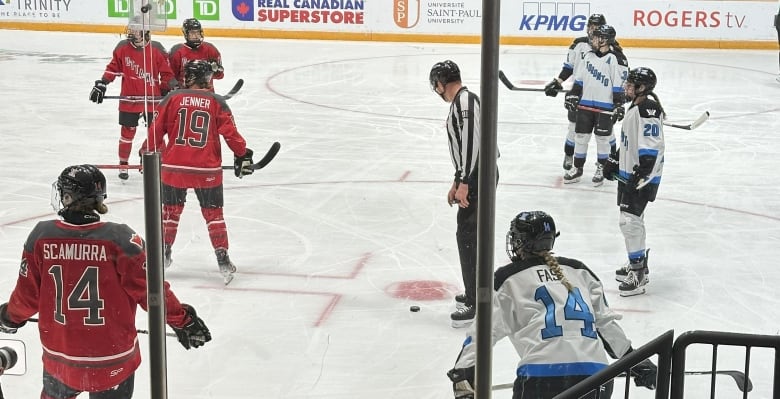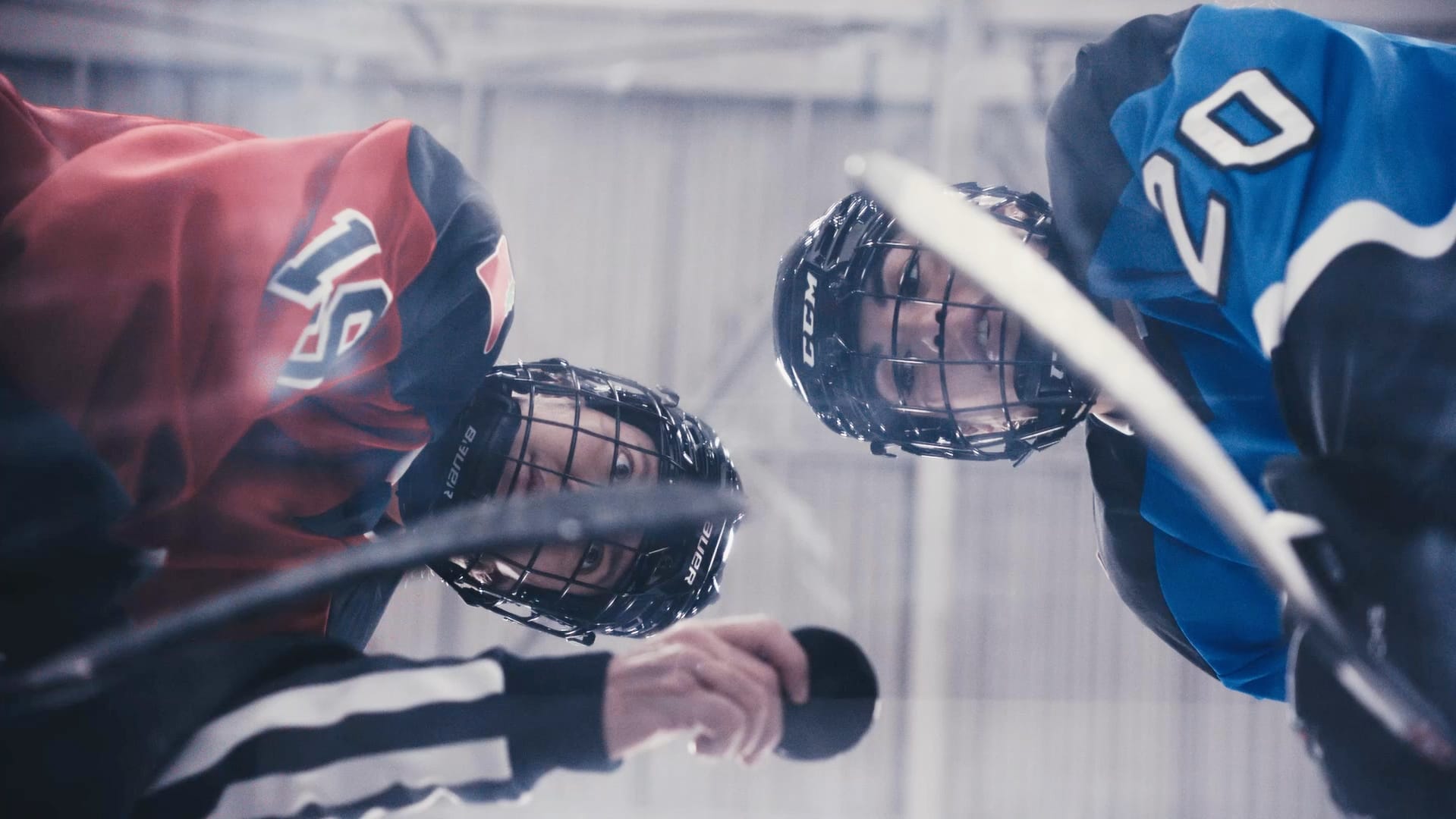This First Person column is the experience of Sali Lafrenie, who lives in Ottawa. For more information about CBC’s First Person stories, please see the FAQ.
“Game 1. Day 1. Season 1.”
That tagline replays in my head whenever I think back to New Year’s Day and the inaugural PWHL game between Toronto and New York. Even though I was visiting my family in Regina, I knew I couldn’t miss the game. It was a historic moment in hockey and I wanted to be a part of it, no matter how many kilometres separated me from that arena in Toronto.
While my uncle was in the kitchen cooking the big meal and the rest of the family did their own thing, I had the big screen TV all to myself. It was perfect. I curled up on the couch and turned the volume up until it filled the living room. Across the screen flashed scenes of fans piling into the arena with bright purple and grey hats and little kids with signs that read, “In our PWHL era.”
Before I knew it, the announcer introduced the athletes. When they called Sarah Nurse’s name, it felt like time stopped. I couldn’t take my eyes off of Nursey. Her makeup, her curly hair. I took it all in. I remember thinking, “Wow. She looks like me. There’s a pro hockey player who looks like me.“
And ever since then, I’ve been down bad for the league. Not just the players but the community and the analysts around them, too.
Growing up, sports were always an important part of my life and my identity. I was two when I received my first soccer ball from a family friend and began swimming shortly thereafter. As I got older, my love for sports also grew, especially for sports like three-pitch softball and ultimate frisbee. Of all the sports I played, I loved field hockey the most.
But as much as I loved it — and I played it for 10 years — I never had any role models in the sport who looked like me. I’ve only ever played with two Black teammates — one for a couple of years in high school and one for a weekend tournament. I may not have been able to verbalize it then, but looking back I know I definitely felt the absence.
While I don’t play sports anymore thanks to five concussions, I’m still a sports fan. I was raised on epic battles between Venus and Serena Williams and lived for the wall-to-wall coverage of the Olympics.
In 2015, I volunteered at the Pan American Games in Toronto. That’s what sparked my love of live sports, something that I have carried with me into adulthood, when I started watching the CFL and the NBA. So when my friend texted our group chat on the eve of ticket sales to see who wanted to buy season tickets for PWHL Ottawa, I was immediately down.
There’s nothing better than live sports.
The energy of the crowd cheering as the team skates onto the ice. The sounds of the players hitting the boards at full speed. The joy of witnessing a jailbreak goal. Seeing rows of girls in the stands. And the first time that Chainsmokers song played after someone scored on Ottawa goalie Emerance Maschmeyer? Devastating.

Although I’m a PWHL Ottawa season ticket holder, I also watch all of the other league games. Even when they overlap, I’ll check the YouTube livestream while I’m sitting in the stands at TD Place.
And when the PWHL three-on-three showcase at the all-star weekend in Toronto was announced, I raced to get tickets. While I was in town, I watched a PWHL Toronto practice at the outdoor rink and finessed my way into meeting Nurse. It was the highlight of my week. I was buzzing and I immediately texted my best friends to let them know all about it.
Since the league started, I’ve just had this overwhelming sense of needing to be involved and to know more. I want to know the rules, the lore and the players, such as Abby Roque, Emma Maltais and Sophie Jaques. I want to fangirl over Taylor Heise a.k.a. Skate McRae, and I want to know the goalies, too.
The more I learn, the more I realize that I don’t just care about the sport and the league. I care about how we got here. And I wanted to figure out what else was behind that feeling back on New Year’s Day when I saw Nurse skate onto the ice and into the history books with the other professional athletes.
CBC Sports’ Andi Petrillo chronicles the long road to a sustainable professional women’s hockey league, from the collapse of the CWHL to first puck drop in the PWHL.
So I made a list — a syllabus of sorts — and I started learning sports history. This was perfect for me because it’s just like what I do as a portfolio archivist at Library and Archives Canada.
Typically my days consist of doing research, processing archival material and writing descriptions to help users find what they’re looking for in our search engine.
One of my favourite parts of the learning process has been playing the video game NHL 23, which is how I learned about the nuances of hockey and a lot about penalties. I also turned to sports documentaries like Black Ice, Wick, Ice Queens and Black Life: Untold Stories to deepen my knowledge of issues of race and gender in sports.
From there, I started following Uninterrupted Canada, the Gist, Beyond Our Game and Saroya Tinker on Instagram. I made podcasts like Jocks in Jills, The Waggle, You Only Die Twice, and ESPN Daily mandatory listening for myself.
Being a fan of the PWHL has given me a new professional sense of direction and helped me realize that I want to become a sports archivist and historian. But it doesn’t stop there.
More work needs to be done by historians, archivists and sports fans like myself to ensure that the stories of women and racialized people in sports are not left out.
We need this representation in our archivists, too. And I’m ready to be all in, especially as a fan, as a public historian, as a documentary lover and as a kid who played sports.
Put me in, coach.
Do you have a compelling personal story that can bring understanding or help others? We want to hear from you. Here’s more info on how to pitch to us.
For more stories about the experiences of Black Canadians — from anti-Black racism to success stories within the Black community — check out Being Black in Canada, a CBC project Black Canadians can be proud of. You can read more stories here.





